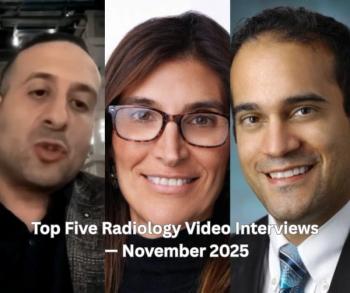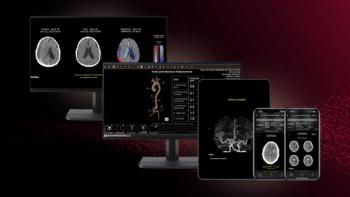
PET May Help Detect Amyloid Deposits in Traumatic Brain Injuries
PET with [11C]PiB may help clinicians detect amyloid deposits in patients who have sustained traumatic brain injuries.
PET with Pittsburgh Compound B ([11C]PiB) helps detect amyloid deposition in patients with traumatic brain injury (TBI), according to a study published in
Researchers from the United Kingdom and the United States performed in vivo PET at a tertiary neuroscience center and ex vivo immunocytochemistry of autopsy-acquired brain tissue from a neuropathology archive to search for Ã-Amyloid (AÃ) plaques, which are a hallmark of Alzheimer’s disease.
Imaging was performed on 15 patients with TBI (median age 33 years) and 11 healthy subjects (median age 35 years). The patients with TBI had sustained their injuries between one and 361 days prior to the examination. Autopsy-acquired brain tissue came from 16 patients who had a TBI (median age 46 years) and seven who did not die of neurological causes (median age 61 years). The patients who had TBI had sustained their injury between three hours and 56 days prior to death.
The researchers found patients with TBI showed increases in [11C]PiB binding, which may be a marker of AÃ plaque in some areas of the brain.
“Compared with the controls, the patients with TBI showed significantly increased [11C]PiB distribution volume ratios in cortical gray matter and the striatum,” wrote the authors. “But not in the thalamus or white matter.”
There were increases in [11C]PiB distribution volume ratios in patients with TBI seen across most cortical subregions.
The [3H]PiB binding was found in neocortical gray matter where immunocytochemistry demonstrated amyloid deposition. Immunocytochemistry also showed Aβ and β-amyloid precursor protein in white matter, but no [3H]PiB binding. In addition, there was no plaque-associated amyloid immunoreactivity or [3H]PiB binding was in cerebellar gray matter in autopsy-acquired tissue from either controls or patients with TBI. However, cerebellar tissue sample from a patient with TBI showed amyloid angiopathy in meningeal vessels.
"The use of [11C]PIB PET for amyloid imaging following TBI provides us with the potential for understanding the pathophysiology of TBI, for characterizing the mechanistic drivers of disease progression or suboptimal recovery in the subacute phase of TBI, for identifying patients at high risk of accelerated AD, and for evaluating the potential of antiamyloid therapies," the authors concluded.
Newsletter
Stay at the forefront of radiology with the Diagnostic Imaging newsletter, delivering the latest news, clinical insights, and imaging advancements for today’s radiologists.



























